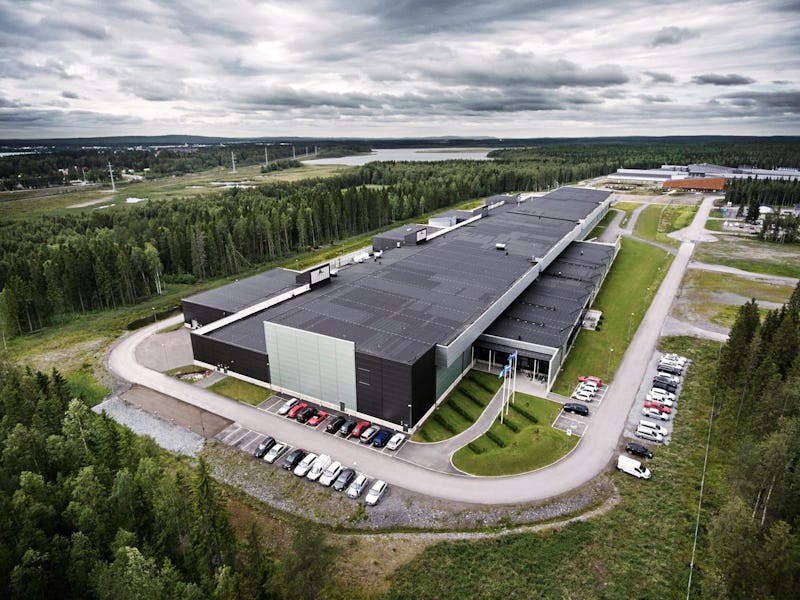Mark Zuckerberg would like the world to know that Facebook technology is the best technology. He announced on Wednesday that, for the next few weeks, he’d be sharing “rare photos of the most advanced technology Facebook is building around the world.” Zuckerberg began that photo dump with Facebook’s data center in Luleå, Sweden.
This was Facebook’s first data center outside of the United States, and it opened way back in 2013, so it’s near and dear to Zuck’s heart. It’s enormous: The main building’s interior is the size of six football fields. Unlike its brand new New Mexico data center, which is in the desert, the Luleå center capitalizes on year-round cold weather to keep the abundant servers at a reasonable temperature. The small city is “less than 70 miles south of the Arctic Circle,” Zuck explained, so Facebook engineers decided to suck in cold air with massive fans.
Data centers tend to get hot, what with all their servers keeping your personal information flowing. Google adopted an alternative strategy to keep temperatures — and costs — low: It employed its DeepMind artificial intelligence to control its temperature maintenance system, and by doing so cut its energy bill in half. At other locations, Google spruced up its data centers with big murals.
Zuck explains: "The equipment is reduced to its basics so it runs cooler. It can also be easily accessed and repaired quickly. A few years ago, it took an hour to repair a server hard drive. At Luleå, that’s down to two minutes."
There’s an evident push in the tech world to make data centers seem more real, to acknowledge their existence; given the public’s general ignorance about how the internet, social networks, and search engines function, this is reasonable.
The data center's "main hall."
This data center employs just 150 people — about “one technician for every 25,000 servers,” Zuckerberg wrote. And given its size, these technicians travel about on scooters. (The technicians selected for the photos all seem quite pleased with their work.) Zuckerberg took the opportunity to show off destroyed hard drives, which may have at one time held your personal Facebook information. Luckily, Facebook seems pretty adept at destroying them.
Here's Zuck's caption: "Old and obsolete hard drives are crunched, forever protecting privacy. Christer Jonsson is in charge of this important task. 'I must be very careful,' he says."
But Facebook is also tooting its own horn, and Zuckerberg his. “A dozen hydro-electric plants operate on nearby rivers, providing a reliable and renewable power source,” he wrote. “The whole system is 10% more efficient and uses almost 40% less power than traditional data centers.” In one of the photo’s captions, Facebook’s director of data center design engineering Jay Park claims that “There is no more efficient data center in the world.” (He’d do well to check in on Reykjavík’s data centers, though.)
